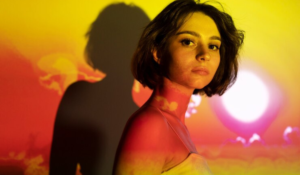An Introduction to Shadows in Photography

A photograph reveals its full splendor when juxtaposed with darkness, the art of capturing light. A photograph’s essence lies in the intricate interplay of light and shadow. While highlights tend to steal the spotlight, shadows shape the mood, aesthetics, and dimensionality of an image through their subtle nuances. Our exploration of shadows in photography takes us on a journey into their fascinating world, exploring their characteristics and significance.
Shadows thrown
Silent witnesses emerge when an object obstructs the path of a light source, casting its distinct silhouette upon a surface. This visual narrative transcends the boundaries of the physical world through shadows that faithfully reflect the contours of the obstruction. Photographers manipulate distance between object and light source to sculpt the width and intensity of thrown shadows, crafting compositions that have depth and intrigue.
Shadows of self
In stark contrast, self-shadows appear as silent whispers from within, emanating from changes in an object’s shape or surface orientation. As poignant reminders of the object’s three-dimensional presence, these shadows are born from its essence. Luminosity of self-shadows dances in harmony with the angle at which light caresses the surface, orchestrating a symphony of illumination and obscurity. Photography requires an understanding of self-shadows in order to convey the true essence of subjects.
Shadow Components
Shadow luminance is influenced by a variety of factors, such as the proximity of the light source, ambient bounce, and fill lights or grids. The brightness of shadows sets the stage for an emotive journey, evoking drama, tension, or tranquility with every flicker, whether they are in the depths of the abyss or whispers of light.
Shadows are a testament to the interplay between light and darkness, form and void. Compositions are enriched with layers of meaning and symbolism infused by the direction and shape of shadows, which are sculpted by the light source and the subject’s physical attributes.
Penumbra, umbra, and antumbra
Every shadow has an umbra, untouched by the light’s caresses, a place of darkness. Intricately sculpted by the dance between subject and light, its size and orientation invite the viewer into an intriguing world.
As the threshold between light and shadow, the penumbra weaves a delicate tapestry of transition, embracing the soft whispers of illumination and the velvety embrace of obscurity. Depending on light source shape and size, its width determines the quality of light and the texture of shadows, painting compositions in a subtle and elegant manner.
An antumbra is an ethereal oasis within the shadow’s embrace, often overlooked yet brimming with ethereal beauty. The soft, otherworldly glow produced by this celestial phenomenon invites viewers to lose themselves in its embrace.
Final thoughts
Although this discourse provides only a glimpse into the mesmerizing realm of shadows in photography, it reveals their enduring allure and profound significance. With skill and reverence, photographers unravel the mysteries of light and shadow and weave them into the tapestry of their compositions. Through experimentation and observation, we unlock the infinite creative possibilities that lie within the interplay of light and darkness. As shadows dance across the canvas of photographic expression, let us embrace their inherent power, elevating our images from mere representations to evocative narratives filled with depth, emotion, and resonance.



